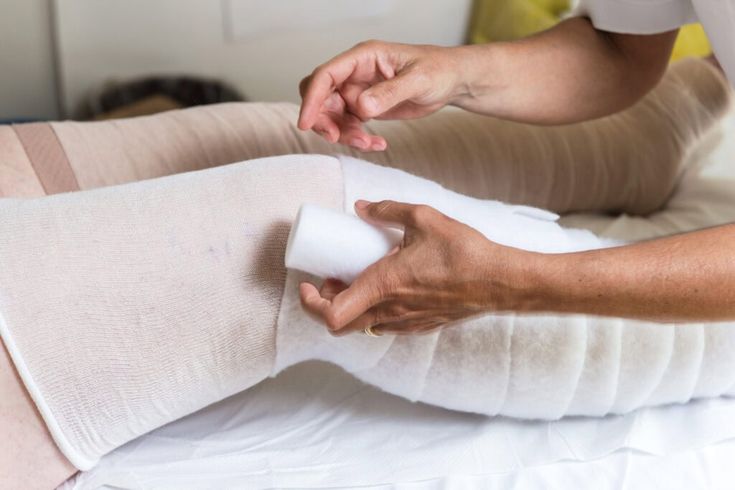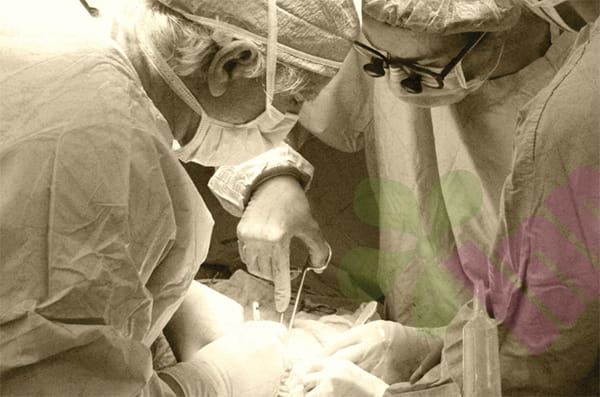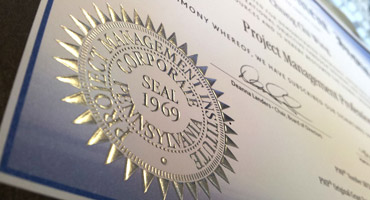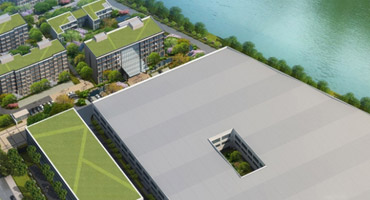When wounds are slow to heal, especially when accompanied by persistent exudate, swelling, or venous insufficiency, doctors often recommend a seemingly simple but very effective physical therapy method called compression therapy. It applies external pressure to improve local blood circulation, reduce edema, and create a more favorable environment for wound healing. This method has a long history and is well-supported by science, and is one of the cornerstone treatments for many chronic wounds and lymphedema.

Why does compression therapy work?
External pressure can promote the return of interstitial fluid (including lymph and inflammatory exudate) to veins and lymphatic vessels, significantly reducing local swelling. After the swelling subsides, the tension of the tissue around the wound decreases, and blood supply and oxygenation are improved. Moderate pressure helps to enhance blood inflow to the arterioles, while promoting venous blood and lymph to return to the heart more effectively, reducing blood stasis, thereby improving the local nutrient supply and metabolic waste removal efficiency of the wound. For certain types of wounds (such as hypertrophic scars or venous ulcers), pressure can inhibit excessive proliferation of fibroblasts and disordered deposition of collagen, helping to form smoother and healthier granulation tissue. Pressure dressings or bandages can provide physical support for the wound, reduce friction and damage caused by tissue movement, and create a relatively stable healing space.
Which wounds are suitable for compression therapy?
- Venous leg ulcers: This is the area where compression therapy is most widely used and has the most obvious effect. Venous hypertension in the lower extremities is the main cause of this type of ulcer, and compression therapy is the key to solving the underlying problem.
- Lymphedema-related wounds or exudates, such as upper limb lymphedema with skin damage or lymphatic leakage after breast cancer surgery.
- Long-term unhealed trauma or postoperative wounds with swelling, especially when exudate persists or tissue edema is obvious.
- Prevention and treatment of hypertrophic scars/keloids: Usually, silicone gel sheets combined with elastic bandages or pressure garments are used.
Compression therapy is implemented in the following ways :
It is very important to choose the appropriate compression method, which needs to be determined by the doctor or wound therapist based on the wound type, location, severity, and patient tolerance:
- Multi-layer compression bandage system:
Structure: Usually consists of 3-4 layers: contact layer (such as non-stick wound dressing), absorption layer (absorbs exudate), cotton pad/filling layer (evenly distributes pressure and protects bony prominences), and fixation/elastic bandage layer (provides continuous pressure).
Advantages: The pressure can be adjusted in a wide range, and it has strong hygroscopicity. It is suitable for patients with a lot of exudate, irregular limb shape, and severe edema (such as the acute stage of venous ulcers in the lower limbs).
Pressure maintenance: The dressing needs to be changed regularly (usually 1-2 times a week or according to the exudate situation) by professionals to ensure constant pressure and cleanliness.
- Medical elastic stockings (pressure stockings):
Classification: It is divided into different pressure levels (such as level I <20mmHg, level II 20-30mmHg, level III 30-40mmHg, level IV >40mmHg). Level II or III is usually used for long-term maintenance treatment of leg venous ulcers after healing.
Advantages: easy to wear, good appearance, suitable for long-term maintenance treatment, and prevention of recurrence.
Key points: The limb size must be accurately measured or the right size must be selected to ensure that the pressure gradient (highest at the ankle and decreasing towards the proximal end) is correctly distributed. Put it on before getting up in the morning and take it off before going to bed. It needs to be replaced regularly (usually every 3-6 months or when it loses elasticity).
- Inflatable pressurization device:
Principle: Sequential compression of the limb at a set pressure and cycling pattern is applied via an inflatable cuff or cylinder.
Indications: Mainly used to treat lymphedema or severe venous insufficiency, as an adjunct or short-term intensive treatment for bandages or compression stockings. Usually used at home or in a clinic.
- Special pressure clothing/suit:
Uses: Mainly used to control scar hyperplasia (such as after burns) or to shape and pressurize lymphedema in specific areas (such as the head, face, and trunk). Requires high customization.
Compression therapy usually requires long-term adherence to achieve the best results, especially for the prevention of recurrence and long-term management of lymphedema after the healing of chronic venous ulcers. Patients may find it troublesome or uncomfortable to wear, and medical staff need to fully explain its necessity and encourage patients to overcome difficulties. When applied correctly and closely monitored, compression therapy is a safe, economical, and effective means to significantly accelerate wound healing, relieve pain, and improve quality of life. For more information on Innomed®Elastic Bandage Self-Adhesive, refer to the Previous Articles. If you have customized needs, you are welcome to contact us; You Wholeheartedly. At longterm medical, we transform this data by Innovating and Developing Products that Make Life easier for those who need loving care.
Editor: kiki Jia

 English
English عربى
عربى Español
Español русский
русский 中文简体
中文简体








